Steel path off to good start
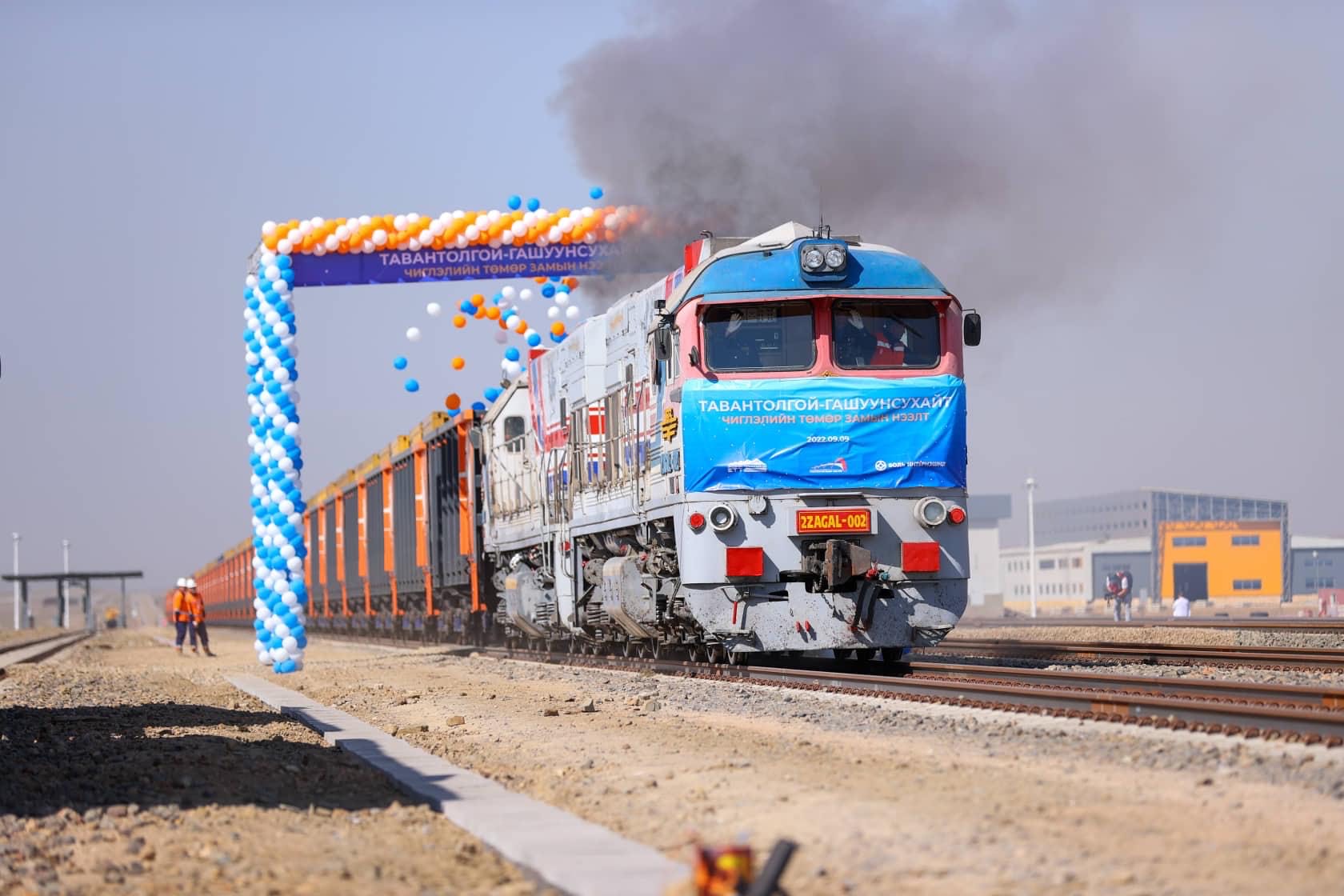
Mongolia built a 1,111 kilometers railway connecting the northern and southern borders with the support of the Soviet Union in 1955. Today approximately seven decades later, we have developed the second largest railroad project, using only Mongolian engineers and innovations, with no foreign support. This is significant in the import/export sectors. In August of 2018, the Mongolian Government approved Resolution No.242, which indicates the founding of Tavantolgoi Railway LLC, the joint venture of Mongolian Railway state-owned JSC and Erdenes Tavantolgoi JSC aiming to further develop the Tavantolgoi-Gashuunsukhait Railway. Therefore, the project which was only on paper was started with the cooperation of general contractor Bodi International LLC and roughly 600 local subcontractor enterprises while employing around 5,000 engineers using 2,000 pieces of machinery and equipment under a total budget of 1.3 billion USD.
The Tavantolgoi-Gashuunsukhait Railway, the first and foremost first-class railway development project in Mongolia, has two stations, six junctions, 16 bridges, a semi-automatic barrier system, and uses Long Welded Rail (RWL) technology. The total length of this railway is 233.6 kilometers, with the capacity to transport 30-50 million tons annually.
The railway starts from Tavantolgoi Station and stretches to Gashuunsukhait-Gantsmod Port, which is located 10 kilometers south of Tsogttsetsii Soum inUmnugovi Province. The day we were covering the railway opening ceremony, the burning sunlight of the Gobi Desert was beating down on us from the sky without a single cloud, allowing us to feel the working conditions experienced by Mongolian engineers and workers: harsh enough heat to cold and stormy to dry. However, they were capable of continuing the construction work.
Our country has politicized, argued, and repeatedly stalled the Tavantolgoi-Gashuunsukhait Railway Project for many years. When choosing between narrow or wide gauges, we remember the widespread dispute among the political and business factions labeling each other as “Russian spies,” “Chinese spies,” or “traitors,” even though all are Mongolians. Due to such disputes and other hurdles, including financing, and investment problems, it took Mongolia 14 years to operate the railway.
The transport and logistics development are the most crucial for a country that generates the state budget revenue primarily via mining and minerals export. That put the railway opportunity cost under the spotlight. Economists and experts have estimated how much revenue Mongolians would have gathered to the state budget if the railway had been put into operation 14 years ago instead of arguing which to choose, narrow or broad gauge. Moreover, there were rumors that Bodi International LLC, the project’s general contractor, was selected without a competitor.
Nevertheless, Bodi International successfully managed to build the historic construction amid a challenging time with the pandemic spread, border restrictions, and the Russia-Ukraine war. The effort was apparent during the opening ceremony.
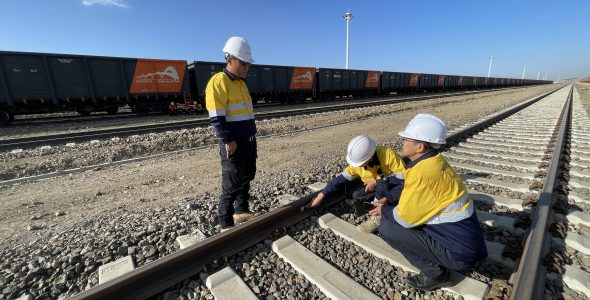
Declaring the official transportation commencement of the Tavantolgoi Railway, the first train with 50 hopper wagons filled with 4,700 tons of coal departed for Gashuunsukhait Port honking the train horns. But the coal train stops 3.2 km from Gants Mod port, the Chinese border, to unload the coal, and then the coal is exported by trucks. That is because the railway needs a bogie-changing facility.
Mongolia and China agreed on the design of the bogie-changing facility, which would be developed by a Chinese institute. “The construction of the facility will begin next spring,” said N. Udaanjargal, the CEO of Tavantolgoi Railway LLC. Previously, Mongolian Prime Minister L.Oyun-Erdene finalized the issues regarding the connection between Gashuunsukhait and Gantsmod Ports during an official visit of Mr.Wang Yi, China’s State Councilor and Foreign Minister, to Mongolia in August.
Moreover, our country must agree with China in regulating the railway border process. Thus, the Mutual Agreement on Cross Border Railway with China of 1955 needs amendment. Mongolian Parliament Speaker G. Zandanshatar has requested Mr. Li Zhanshun, the Chairman of the Standing Committee of the National People’s Congress of China, to start considering the amendments. The discussion occurred during an official visit of Mr. Li Zhanshun to Mongolia on September 10 to 12, 2022. The Speaker furthermore asked the National People’s Congress to approve the “Intergovernmental Agreement Between Mongolia and the People’s Republic of China on Developing Cooperation in Railway Transit” with no delay, which was established in 2014.
There are more issues related to the railway. The design development phase of the loading and unloading terminal has started aiming for a faster export process. Each company working on the Tavantolgoi coal deposit, including Erdenes Tavantolgoi, Energy Resources, and locally owned Tavantolgoi LLC, will build and operate coal loading and transfer terminals shortly.
After completing the terminals in 2-3 years, the railway can export a maximum of 53 million tons of coal. As a result, an average of 44 million US dollars in taxes will be collected in the state budget annually. The cost of transporting coal from the Tavantolgoi Mine to Gants Mod Port will decrease from 47 USD to 12 USD per ton.
During the opening ceremony, the President of Mongolia, U. Khurelsukh, pointed out that the railway will create over 2,000 new permanent jobs, and the production of mines will increase by two to three times by the time the railway is fully operational. “The Tavantolgoi to Gashuunsuhait Railway is the artery of Mongolia’s development and investment growth,” he said. “It will be a path of life that will accelerate prosperity of both city and rural residents by creating a new life alongside new residential areas, increasing jobs, and more”.
The next concern that limits the full use of the railroad, which is worth 1.3 billion USD, is the locomotive. Mongolian engineers and technicians can handle the construction of upper and lower railroad structures, rolling stock maintenance, and energy and signaling systems. However, since Mongolia does not manufacture locomotives domestically, they must be purchased from abroad. Now, there is a delay due to the Russia-Ukraine war. Therefore, another option is necessary, says N. Udaanjargal.
Following the ceremony, a team of ministers, government members, and journalists headed by N. Udaanjargal took the big yellow locomotive and left for the intersection Khairkhan, located over 18 kilometers away from Tavantolgoi station. The trip was brief but enough to learn about the advantages of the RWL technology; there was no chugging sound and halt-like movements. A loaded train can travel 80 km per hour, while an empty train can travel 100 km per hour on the Long Welded Rail. This first-class rail with the latest technologies has decreased the operating costs, says B. Erdenebayar, the project director at Bodi International. The signaling system can monitor and prevent accidents without human intervention. Another advantage is the usage of the wagon locomotive for a long time with less maintenance. The coefficient of technical readiness of locomotives is 95 percent.
Bodi International has built the railway under the barter agreement: it will own 10 percent of the total coal mined by Erdenes Tavantolgoi JSC for five years in exchange for a total investment in the railway.
Mongolians now have a railway built by their own hands, thus making history. Mongolians say, “Prosperity follows the road,” which means Mongolia’s economic flow will accelerate thanks to this new steel path.
Viewpoint
S.Byambatsogt, Minister of Road and Transport Development
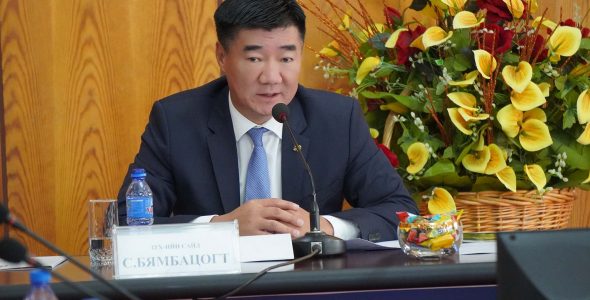 The railway, which was a dispute for 14 years, was put into operation shortly after I became the Road and Transport Development Minister. The railway is a key to expanding Mongolian export, and a way to increase budget income. The rail can be used as an import path shortly. Mongolians will soon notice how much the railway was needed. The day marks the end of the 14-year-long conflict between politicians.
The railway, which was a dispute for 14 years, was put into operation shortly after I became the Road and Transport Development Minister. The railway is a key to expanding Mongolian export, and a way to increase budget income. The rail can be used as an import path shortly. Mongolians will soon notice how much the railway was needed. The day marks the end of the 14-year-long conflict between politicians.
We are planning to intensify the significant railway construction projects, including the vertical railway connecting east to west of Mongolia and the Bogdkhan Railway and Hangi-Mandal Railway.
The most important issue is determining the border junction of the Hangi-Mandal Railway, which is essential in order to receive the fruits of the investment. The 200-kilometer railway will be completed soon.
Moreover, an extensive negotiation is required with the Governments of the neighboring countries, Russia and China, regarding the border connection issue of the Zuunbayan-Tavantolgoi Railway. If all the problems are solved, railway freight transportation will become smoother and reduce border jams.
J.Ganbaatar, Minister of Mining and Heavy Industry
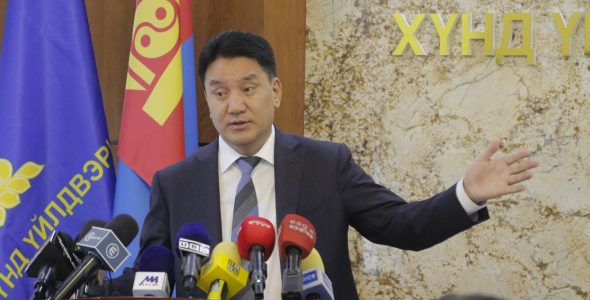 Mongolians can achieve every goal if we unite for a common purpose and act decisively. Both foreigners and locals are observing whether we can do it or not. The achievement of the railway project can be a good instance that proves Mongolians can do it if they work hard. There is a tremendous economic loss if we argued on significant mining projects extensively. We saw a such debate on the Tavantolgoi Railway situation.
Mongolians can achieve every goal if we unite for a common purpose and act decisively. Both foreigners and locals are observing whether we can do it or not. The achievement of the railway project can be a good instance that proves Mongolians can do it if they work hard. There is a tremendous economic loss if we argued on significant mining projects extensively. We saw a such debate on the Tavantolgoi Railway situation.
The economic impact is the most crucial. Mongolians realized the importance of exporting coal by rail rather than by road as it is five times cheaper per ton. We expected the cost to be 7-8 USD, but it is 12 USD today, possibly due to the current exchange rate, fuel price, and labor market growth.
During the pandemic, it was challenging to import just two containers due to customs restrictions. Then there were lots of financial and customs hardships in constructing the rail. Both are understood well by the public and private. Therefore, I would like to express my sincere gratitude to all the private sector entities for finishing this major project.
Tavantolgoi Mine has enormous reserves to be used for many years. It has 8.3 billion tons of coal, of which 53 percent is high-quality coking coal. Exporting 40 million tons per year produces a huge income. For optimal cooperation of the railway and other infrastructure, a comprehensive plan should be implemented by the Ministry of Road and Transport Development.
Ch.Khurelbaatar, Minister of Economy and Development
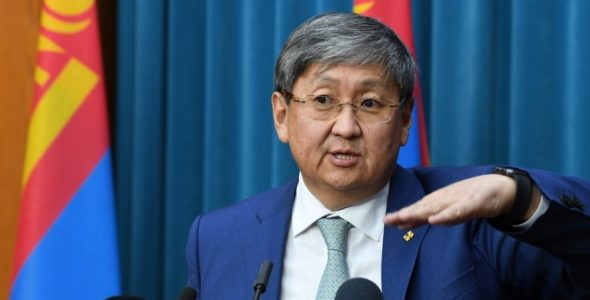 Tavantolgoi Railway Project started 14 years ago under the Government of Prime Minister S. Bayar. After some interruption, the construction work restarted under the governance of U.Khurelsukh and has now started operations during L.Oyun-Erdene’s Government.
Tavantolgoi Railway Project started 14 years ago under the Government of Prime Minister S. Bayar. After some interruption, the construction work restarted under the governance of U.Khurelsukh and has now started operations during L.Oyun-Erdene’s Government.
It has a significant influence on Mongolia’s coal exports. With the coal export growth, foreign currency reserve will increase, MNT value will increase and inflation will be limited, which in return will affect positively the lives of the people.
The railway development will probably continue for two more years in order to reach its full capacity. Much construction work is expected on both borders. There is an estimated expectation that around five to six million tons of coal will be transported using Tavantolgoi Railway next year.
R.Seddorj, Governor of Umnugobi province
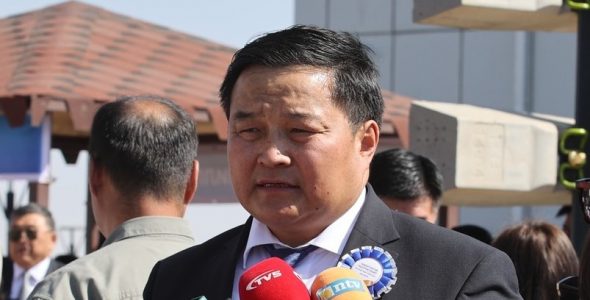 This environmentally friendly railway will eliminate messy truck transportation and logistics passing through our province. The railway passes through Tsogttsetsii, Bayan-Ovoo, and Hanbogd soums in Umnugovi Province. Local herders supported the development of the railway in every possible way, by changing the seasonal migration route and allowing the use of local wells.
This environmentally friendly railway will eliminate messy truck transportation and logistics passing through our province. The railway passes through Tsogttsetsii, Bayan-Ovoo, and Hanbogd soums in Umnugovi Province. Local herders supported the development of the railway in every possible way, by changing the seasonal migration route and allowing the use of local wells.
Rehabilitation of the coal transportation truck damaged areas is crucial now. We hope that the companies who have used the soil will successfully complete the rehabilitation phase in accordance with the law and thus don`t make harm the railway’s reputation.
Many livestock crossings are planned in the railway project draft. However, the crossings are now too far-distanced and low in height that camels cannot go through, according to the herders. I hope this problem will be resolved as requested by the herders.
N.Enkhbayar, Economist
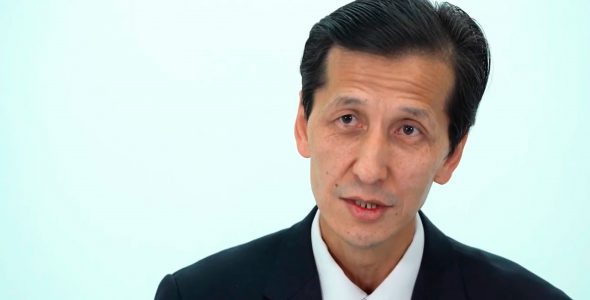 According to the media, the railway has not yet reached the border port, and it will not be complete until the transshipment facility is ready. The Chinese and Mongolian Governments, ministries, and agencies are still negotiating where the border point of the Gashuunsukhait-Gantsmod Port should be. Following the negotiation, the transshipment facility is expected to be finished by 2023 or 2024.
According to the media, the railway has not yet reached the border port, and it will not be complete until the transshipment facility is ready. The Chinese and Mongolian Governments, ministries, and agencies are still negotiating where the border point of the Gashuunsukhait-Gantsmod Port should be. Following the negotiation, the transshipment facility is expected to be finished by 2023 or 2024.
Considering these facts, coal transportation through the railway will presumably commence from the end of 2024 or the spring of 2025.
Furthermore, since last spring, an extensive coal loading facility has been built at the Tavantolgoi Deposit. Thus, we can benefit from this railway after these infrastructure facilities are finished, maybe in 2025.
Today, we are only talking about the maximum possible volume via rail transportation. But in reality, we can only precisely determine the export coal volume in 2025 after taking into consideration of many factors, including the coal loading and unloading capacity, rail transportation and border crossing capacity, and coal demand in China. As of now, one thing is certain: coal transportation costs will significantly decrease after the railway is operational at full length.
B.Lakshmi, the economist
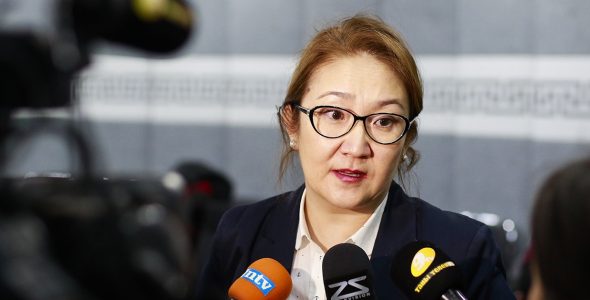 This opens an opportunity for Mongolia to transport its coal faster and in larger volumes. Its significance includes lower coal transportation costs and minimum environmental impact. Though, transshipment is a must when we take into account the wide gauge of the Chinese railway system. When construction of the transshipment terminal is still underway, we must review and calculate its capacity. Its capacity should be able to handle a large amount of coal. One should make a good lesson of Zamyn-Uud port crane which comes unavailable once in a while, therefore such bad infrastructures should not be used at the Gashuunsukhait port terminal.
This opens an opportunity for Mongolia to transport its coal faster and in larger volumes. Its significance includes lower coal transportation costs and minimum environmental impact. Though, transshipment is a must when we take into account the wide gauge of the Chinese railway system. When construction of the transshipment terminal is still underway, we must review and calculate its capacity. Its capacity should be able to handle a large amount of coal. One should make a good lesson of Zamyn-Uud port crane which comes unavailable once in a while, therefore such bad infrastructures should not be used at the Gashuunsukhait port terminal.
Mongolia is landlocked, so the construction of transportation infrastructure is vital. This railway construction is a strategically important step for Mongolia. Such vital projects must not be politicized, we must remember. Had the railway been built many years ago as planned, much more coal would have been exported. For the last few years, commodity prices, including coal have been on the rise. This means we have a huge amount of opportunity cost. We must not repeat such costly mistakes in the future.